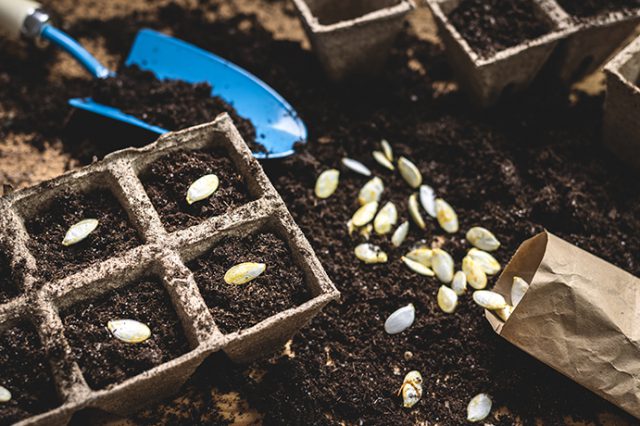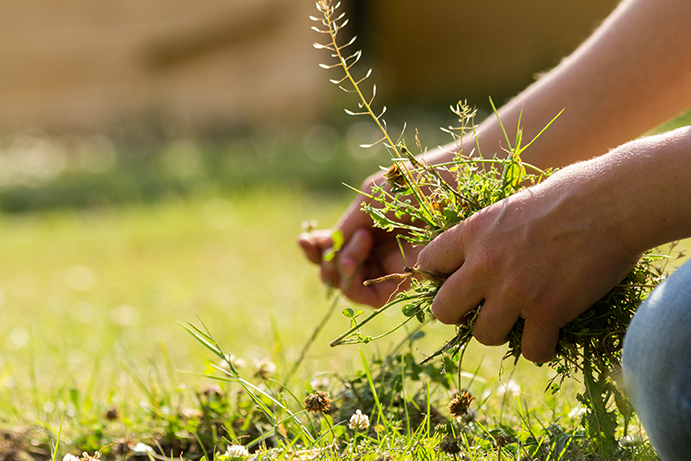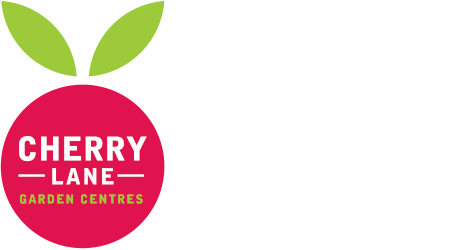March Gardening To-Do List

The days are starting to get longer and with spring just around the corner, there are plenty of things to do in your garden to make sure it thrives this season. Make the most of those sunnier days and spend some time in the fresh air prepping for spring.
Plant summer flowering bulbs outside. Summer flowering bulbs, such as Gladioli, Lilies and Begonias, are best planted once the soil has started to warm up. Spring is the perfect time to get your summer-flowing bulbs in the ground ready for the upcoming season. It may be worth waiting until there is no possible chance of frost to plant some of the less hardy varieties of flowers.
Plant early potatoes. First early potatoes and second early potatoes can both be planted out in March if they are given ample frost protection. Plant your first earlies at the beginning of the month and your second earlies at the end of the month. Plant them around 10cm deep into nutritious compost and in a nice sunny spot, leaving 50-60cm spacing in between each tuber.
Start mowing lawns. As the temperature of the ground starts to increase with the warmer weather, you can expect the grass in your garden to start growing once again. Before carrying out your first mowing for Spring, be sure to check the lawn and longer grass patches for any resident wildlife. Hedgehogs have been known to curl up in long grass and can be easily over sighted. Make sure the grass is as dry as possible by cutting later in the day.
Weed and mulch borders. Give the area a thorough weeding and go over with a garden fork if needed. Before laying down any mulch, you will need to ensure that the ground is nice and moist. If the soil feels dry, you can always water the area as trying to moisten the ground after mulching will be difficult. Apply a 5cm thick layer of your chosen mulch and spread it across the soil, leaving a small gap around the plant stems.

Prepare the ground for laying turf. Laying turf can be a costly process, so it is important to prepare your ground properly to avoid any problems. Make sure you allow plenty of time to prep the ground so that it is ready for when your turf arrives. To prep, the ground, follow these steps: remove plants, debris and weeds, rotovate the top 15cm of soil, improve the soil quality if needed, level out the ground and compact the soil, add fertiliser and give the area a once over to make sure you are happy with it.
Sow tomatoes, chillies, sweet peppers, and aubergines in pots indoors or in the greenhouse. Many vegetables and salad vegetables benefit from a warmer environment for germination. March is a great time to start sowing vegetable seeds indoors, or in your greenhouse. Investing in good quality compost which has a mixed in plant food will benefit in the long run. Why not opt for some biodegradable seed trays or seed pots for an eco-friendly alternative?
Protect young perennials from slugs. As your perennials begin to grow back for the new season, the newly sprouting leaves will be vulnerable to slugs. It is widely encouraged not to use harmful pesticides in gardens, as slugs are a food source for other forms of wildlife, such as hedgehogs. There are plenty of natural deterrents and ways to ward off slugs, have a read of this fantastic advice from the RHS website.
Weed lawns, apply a feed and then scarify. Now that your grass has returned to its growing state, it will benefit from being scarification. A build-up of moss and dead roots over the winter months may prevent your lawn from accessing the vital nutrients it requires. Scarification of lawns will help to aerate the soil and ensure the grassroots receive plenty of water over the summer months. Applying a nutritious lawn feed to your grass will benefit its growth over the coming months.







